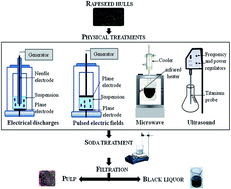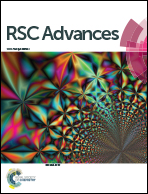Innovative physically-assisted soda fractionation of rapeseed hulls for better recovery of biopolymers
Abstract
A better knowledge of the effect of non-conventional pretreatment technologies, which can avoid the use of high temperatures and detrimental solvents, is necessary. Thus, physical pretreatment (ultrasounds (US), microwaves (MW), high voltage electrical discharges (HVED) and pulsed electric fields (PEF)) were applied in order to evaluate their effects on acid insoluble residue removal and enzymatic hydrolysis yields from rapeseed hulls. The subsequent chemical treatment consisted of adding 0.3 mol L−1 of hydroxide sodium and maintaining the suspension at 60 °C for 2 h. The results showed that applying physical pretreatments resulted in an increasing yield of acid insoluble residue by 5% (PEF), 6% (MW), 8% (HVED), 12% (US) respectively, in comparison with the chemical treatment. The pulps isolated by physical-assisted extraction, showed a higher enzymatic digestibility. The results obtained in the present study confirm that coupling pretreatments constitute a promising alternative for the valorization of this by-product.


 Please wait while we load your content...
Please wait while we load your content...